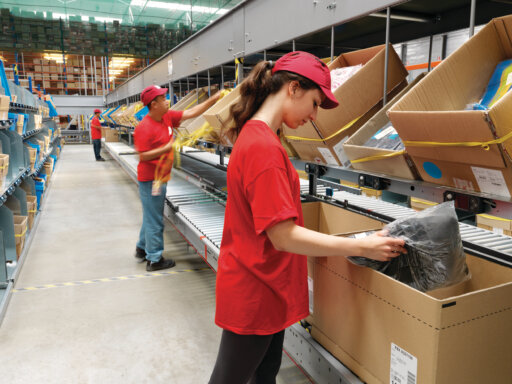Katoen Natie: A Preferred Partner and Expert in Industrial and Automotive Returnable Packaging Handling
Katoen Natie stands as a global leader in providing specialized services for Industrial and Automotive Packaging Handling Centers, providing tailored solutions to meet the intricate logistics needs of the industrial and automotive sectors. With over three decades of experience operating in various countries, Katoen Natie has honed its expertise to deliver efficient, cost-effective, and value-added services.
Advanced Logistics Operations:
Katoen Natie specializes in managing complex logistic operations associated with Industrial and Automotive returnable packaging pools. From receiving to storage, distribution, and reverse logistics, our streamlined processes ensure seamless flow and optimization of the supply chain.
Value Added Services:
Our Packaging Handling Centers offer a wide range of value-added services, including repairing, sorting, repairing, bundling, washing, and assembling of returnable packaging such as bins, KLTs, pallets, pallet frames and lids. By meticulously maintaining the quality and functionality of packaging materials, we contribute significantly to enhancing overall operational efficiency for automotive production facilities.

Tailored Solutions:
Recognizing the diverse needs of OEM’s, Katoen Natie provides tailored solutions designed to meet specific requirements. Whether it involves optimizing inventory management, implementing innovative technologies, or enhancing sustainability practices, our solutions are customized to drive success for our partners.

Global Experience:
With a robust presence across multiple countries, Katoen Natie brings extensive global experience to every project. Our deep understanding of local regulations, cultural nuances, and market dynamics enables us to navigate complexities and deliver consistent excellence across borders.
Commitment to Excellence:
At Katoen Natie, excellence isn’t merely a goal; it’s the cornerstone of our commitment. We continuously strive to improve our processes, invest in cutting-edge technologies, and uphold the highest standards of quality and safety. Our unwavering dedication to customer satisfaction ensures that we not only meet, but exceed expectations, driving success for our clients.
In conclusion, Katoen Natie’s unparalleled expertise in Industrial and Automotive Packaging Handling Centers, makes us the preferred partner for industrial and automotive manufacturers seeking reliable management of their returnable packaging materials and flows.
Ready to discover how Katoen Natie can tailor solutions to meet your specific needs?
Let’s connect.
 An example of a dedicated VAS area[/caption]
Benefits Realized:
This innovative WMS functionality offers significant advantages for our clients:
An example of a dedicated VAS area[/caption]
Benefits Realized:
This innovative WMS functionality offers significant advantages for our clients:
 Infographic: Depicts EV sales by model and location in 2022 and the number of EV's per region.
Infographic: Depicts EV sales by model and location in 2022 and the number of EV's per region.
